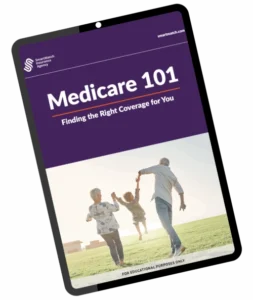


Part A covers inpatient hospital stays, hospice care, nursing home costs, and even limited home health benefits. The types of hospitals covered under Medicare Part A include:
Medicare Part A (and Part B) covers some in home medical care for individuals who meet CMS' criteria for such care. Eligibility for such care must be documented during a face-to-face visit with a qualified provider and provided by a Medicare certified home health provider. See Home Health Services Coverage for more information
These at home services can include:
Additional care covered by Part A:
If you need skilled nursing care, these services must be provided at a Medicare-certified facility in order to meet coverage requirements. To meet coverage requirements for a nursing home, your doctor must certify that you need daily, skilled nursing services that cannot be given in your home. This can include things like IV medications or physical therapy. Medicare Part A won’t cover long-term or personal care.
Hospice care focuses on palliative, not curative, care during which the terminally ill patient is made as comfortable as possible. Hospice care under Medicare Part A focuses on palliative care for individuals with a terminal illness, emphasizing comfort and quality of life. It includes a wide range of services such as nursing care, medications, medical equipment, and counseling. If a patient requires hospitalization for pain or symptom management, Medicare Part A covers the full scope of medically necessary services—not just room and board—provided the hospice team arranges the care.
Medicare Part B is medical insurance that helps cover medically necessary services and supplies needed to diagnose or treat a medical condition. It also includes preventive services to help detect or prevent illnesses at an early stage. Some of the services covered under Medicare Part B include:
In some instances, Medicare Part B will also cover intermittent or part-time rehab and home health services.
Medicare Part C is also known as Medicare Advantage and is sometimes abbreviated to simply an MA plan. Medicare Advantage plans are approved by CMS and offered by private insurance companies. Medicare Advantage required by law to give you benefits as good or better than Original Medicare. They provide the same level of insurance coverage as Original Medicare, however, and some Medicare Advantage plans offer additional coverage, such as hearing, dental, vision, and prescriptions*.
The most common types of Medicare Advantage plans include:
Less common types of Medicare Advantage plans include:
Every Medicare Advantage plan is going to charge different out-of-pocket costs. Each plan will also have different coverage rules. For example, you might need a referral before seeing a specialist and receiving coverage from the plan. Most Medicare Advantage plans include Medicare Part D, prescription drug coverage.
*The extra services and benefits that are covered by Medicare Advantage vary widely between plans. There may not be a plan in your area that has all of these benefits in one plan.
Understand the details about Medicare Advantage in this Resource
Because Part D plans are sometimes referred to as “add-on” coverage, these plans can seem like a minor piece of your Medicare insurance. However, prescription coverage is absolutely critical to health care coverage and should not be an afterthought. For many, it’s one of the most challenging and potentially costly aspects of Medicare. There’s a lot to consider when looking at your options, from the variety of plan choices, plan ratings, and various drug tiers.
The first option is to simply enroll in Part D coverage and add it to an Original Medicare plan. The second option is to combine Medicare Part D into a Medicare Advantage plan.
You can enroll in a stand-alone prescription drug plan if you meet these conditions:
You’re enrolled in either Medicare Part A or Part B.
You permanently reside in the service area of the plan.
Shopping for prescription drug coverage as a Medicare recipient can be a bit confusing. In many cases, cheaper isn’t better. The easiest way to shop for a Medicare Part D plan that’s right for you is to compare different plans’ coverage options for the medications you’re currently taking. Low-cost plans may not pay for your prescriptions. In that case, you’ll be stuck with higher out-of-pocket costs for your medicines. So saving on the monthly premium might not be worth it if it means higher out-of-pocket costs. Another issue to be aware of is the Medicare Part D coverage gap, also commonly known as the “donut hole.”
The donut hole is basically a gap in coverage. This gap is the phase of Part D Medicare coverage that occurs after your initial coverage period has ended. This gap occurs once you and your drug plan have spent a certain amount of money for drugs. The coverage gap forces you to pay a much higher percentage of drug costs until you reach the other end of the gap. The Part D coverage gap is considered closed as of January 1, 2020.

| Modified Adjusted Gross Income | Total Monthly Premium Amount |
|---|---|
| Less than or equal to $109,000 | $202.90 |
| Greater than $109,000 and less than or equal to $137,000 | $284.10 |
| Greater than $137,000 and less than or equal to $171,000 | $405.80 |
| Greater than $171,000 and less than or equal to $205,000 | $527.50 |
| Greater than $205,000 and less than $500,000 | $649.20 |
| Greater than or equal to $500,000 | $689.80 |
| Modified Adjusted Gross Income | Total Monthly Premium Amount |
|---|---|
| Less than or equal to $218,000 | $202.90 |
| Greater than $212,000 and less than or equal to $266,000 | $284.10 |
| Greater than $266,000 and less than or equal to $334,000 | $405.80 |
| Greater than $334,000 and less than or equal to $400,000 | $527.50 |
| Greater than $400,000 and less than $750,000 | $649.20 |
| Greater than or equal to $750,000 | $689.80 |
| Modified Adjusted Gross Income | Income-Related Monthly Adjustment Amount |
|---|---|
| Less than or equal to $109,000 | Your Plan Premium |
| Greater than $109,000 and less than or equal to $137,000 | $14.50 + Your Plan Premium |
| Greater than $137,000 and less than or equal to $171,000 | $37.50 + Your Plan Premium |
| Greater than $171,000 and less than or equal to $205,000 | $60.40 + Your Plan Premium |
| Greater than $205,000 and less than $500,000 | $83.30 + Your Plan Premium |
| Greater than or equal to $500,000 | $91.00 + Your Plan Premium |
| Modified Adjusted Gross Income | Income-Related Monthly Adjustment Amount |
|---|---|
| Less than or equal to $218,000 | Your Plan Premium |
| Greater than $218,000 and less than or equal to $274,000 | $14.50 + Your Plan Premium |
| Greater than $274,000 and less than or equal to $342,000 | $37.50 + Your Plan Premium |
| Greater than $342,000 and less than or equal to $410,000 | $60.40 + Your Plan Premium |
| Greater than $410,000 and less than $ | $83.30 + Your Plan Premium |
| Greater than or equal to $750,000 | $91.00 + Your Plan Premium |
| Modified Adjusted Gross Income | Income-Related Monthly Adjustment Amount |
|---|---|
| Less than or equal to $109,000 | Your Plan Premium |
| Greater than $109,000 and less than $391,000 | $83.30 + Your Plan Premium |
| Greater than or equal to $391,000 | $91.00 + Your Plan Premium |
| Type of Cost Sharing | 2025 | 2026 |
|---|---|---|
| Inpatient hospital deductible | $1,676 | $1,736 |
| Daily hospital coinsurance for 61st-90th day | $419 | $434 |
| Daily hospital coinsurance for lifetime reserve days | $838 | $868 |
| Skilled nursing facility daily coinsurance (days 21-100) | $209.50 | $217 |
If you are a customer looking for a Medicare consultation, please click this link to schedule a time:
Schedule a Medicare Consultation
Please log in to view assigned tenants.